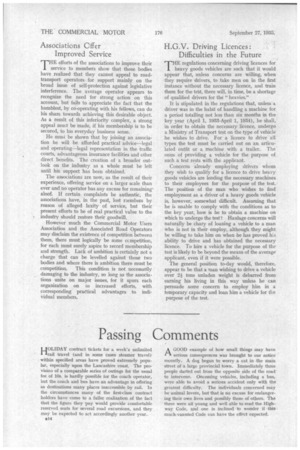Associations Cffer Improved Service
Page 24

If you've noticed an error in this article please click here to report it so we can fix it.
THE efforts of the associations to improve their service to members show that those bodies have realized that they cannot appeal to road transport operators for support mainly on the broad issue of self-protection against legislative interference. The average operator appears to recognize the need for strong action on this account, but fails to appreciate the fact that the humblest, by co-operating with his fellows, can do his share. towards achieving this desirable object. As a result of this inferiority complex, a strong appeal must be made, if his membership is to be secured, to his everyday business sense.
He must be shown that by joining an association he will be afforded practical advice—legal and operating—legal representation in the traffic courts, advantageous insurance facilities and other direct benefits. The creation of a broader outlook on the industry as a whole must be left until his support has been obtained.
The associations are now, as the result of their experience, offering service on a larger scale than ever and no operator has any excuse for remaining' aloof. If certain complaints be authentic, the associations have, in the past, lost members by reason of alleged laxity of service, but their present efforts to be of real practical value to the industry should restore their goodwill.
However much the Commercial Motor Users Association and the Associated Road Operators may disclaim the existence of competition between them, there must logically be some ccmpetition, for each must surely aspire to record membership and strength. Lack of ambition is certainly not a charge that can be levelled against those two bodies and where there is ambition there must be competition. This condition is not necessarily damaging to the industry, so long as the associations unite on major issues, for it spurs each organization on io increased efforts, with corresponding pradtical advantages to individual members.




















































































